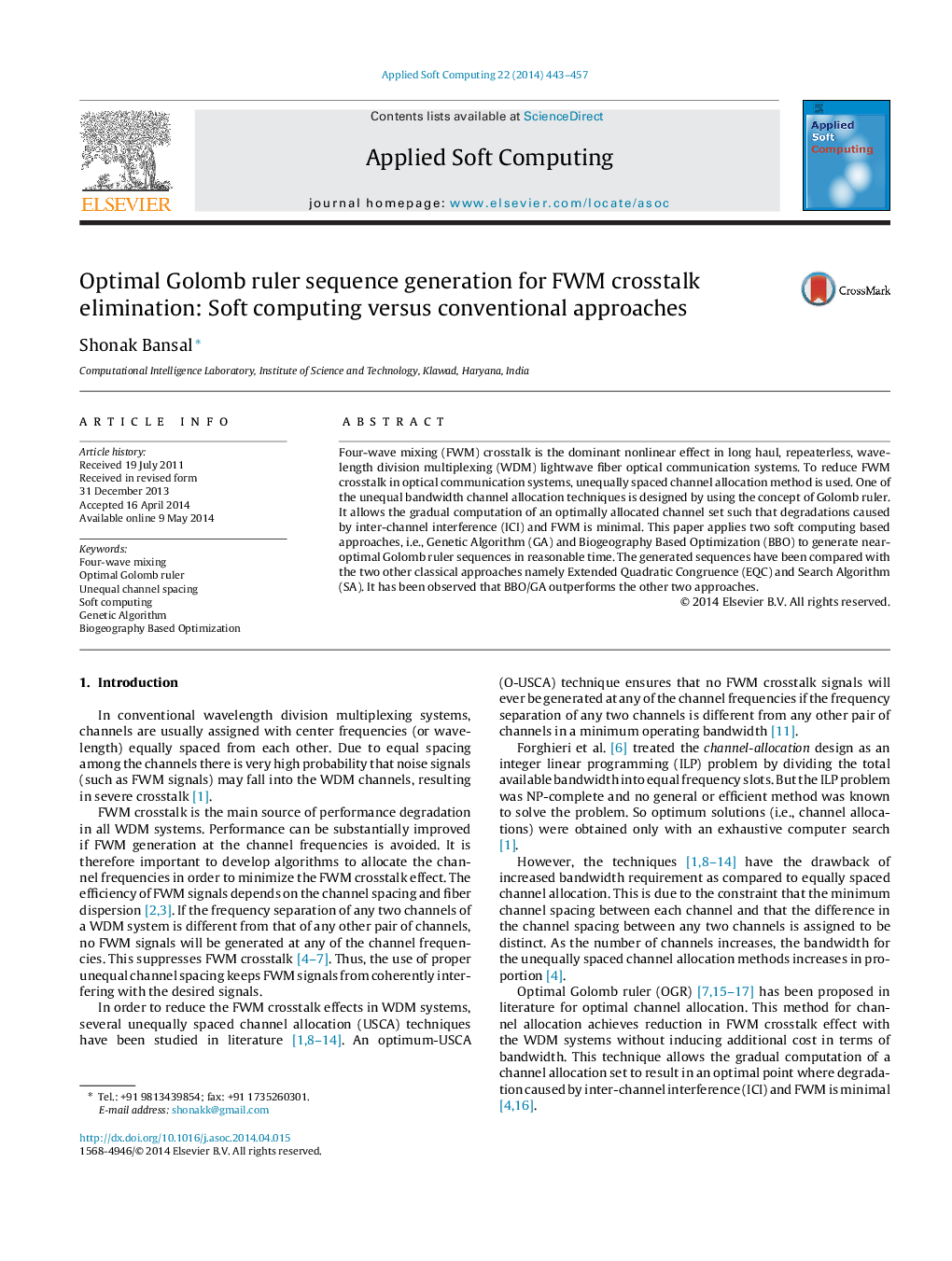| Article ID | Journal | Published Year | Pages | File Type |
|---|---|---|---|---|
| 495366 | Applied Soft Computing | 2014 | 15 Pages |
•The application of Genetic Algorithm and Biogeography Based Optimization to generate near-optimal Golomb ruler sequences is being proposed.•Both the approaches produce near-optimal Golomb ruler sequences very efficiently in reasonable execution time.•The performances have been compared with the two other classical methods namely Extended Quadratic Congruence and Search Algorithm.•The preliminary results indicate that BBO and GA appear to be most efficient approach to such NP-complete problems.•BBO approach outperforms the GA slightly for larger mark values.
Four-wave mixing (FWM) crosstalk is the dominant nonlinear effect in long haul, repeaterless, wavelength division multiplexing (WDM) lightwave fiber optical communication systems. To reduce FWM crosstalk in optical communication systems, unequally spaced channel allocation method is used. One of the unequal bandwidth channel allocation techniques is designed by using the concept of Golomb ruler. It allows the gradual computation of an optimally allocated channel set such that degradations caused by inter-channel interference (ICI) and FWM is minimal. This paper applies two soft computing based approaches, i.e., Genetic Algorithm (GA) and Biogeography Based Optimization (BBO) to generate near-optimal Golomb ruler sequences in reasonable time. The generated sequences have been compared with the two other classical approaches namely Extended Quadratic Congruence (EQC) and Search Algorithm (SA). It has been observed that BBO/GA outperforms the other two approaches.
Graphical abstractFigure optionsDownload full-size imageDownload as PowerPoint slide
